Need Some Help? 0161 223 1843
Need Some Help? 0161 223 1843
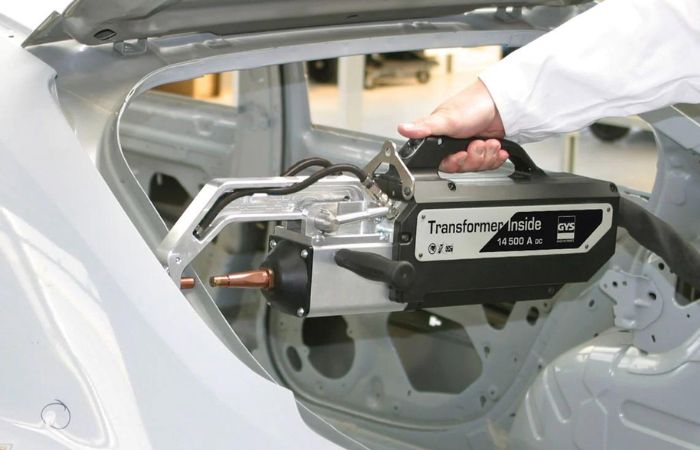
March 12, 2024 8 min read
Buying a spot welder is a big thing for a body shop, they can also be very expensive. Here I will go through what I think are important points to consider when purchasing. I will also explain some of the technical jargon that you will hear and what it means.
Its the resistance in the joint to be welded that creates the heat and resistance welding consists of four things to make a weld.
The final consideration is the duty cycle and how many panel technicians you have.
Inverter spot welding has been around for a very long time as was first introduced in the factories, on the production line. It enables high power welding to be produced quicker and with less heat than a conventional AC transformer welder.
This was critical when galvanised and zinc-coated panels were first introduced as it reduced the burn off of the coatings. It became even more important to weld with less time with the introduction of AHSS (Advanced High Strength Steels).
The main reason though, that the welders have got larger is due to the new alloys used in car manufacture. These alloyed steels have very low resistance and cannot be heated too much or they will lose their strength properties.
This is why spot welders have become larger but the steels have got thinner.
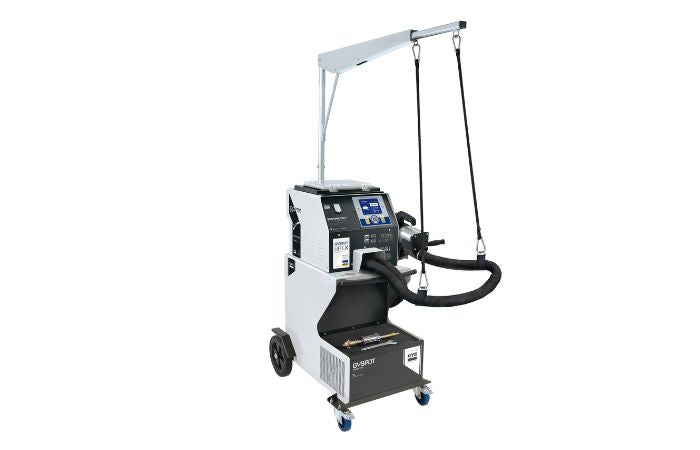
About 15 years ago, cable gun welders were the first type of inverter welder to be introduced into body shops, They invariably had X type welding guns fitted and the power output was 9000 amps. This output increased over the next few years until the ARO 13K Ergoweld peaked out at 13000 amps.
The main problem with these welders was they were reliant on the quality of the buildings mains supply as they required high mains input current. Some workshops could not achieve this, meaning they couldn't achieve the stated maximum current the vehicle manufacturers desired. This problem with supply started the movement by manufacturers towards transformer gun welders.
Next new EMF (Electro Motive Fields) legislation came in meaning the technician had to be protected from these fields as they are produced around the cables and gun when welding.
New machines with special EMF compliant cables were produced but slowly these machines died out for the manufacturer preferred transformer gun welders.
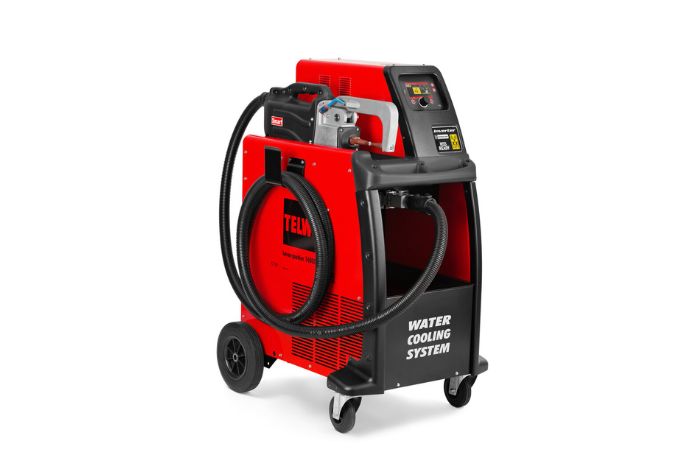
Transformer gun welders have been around since the Invertaspot GT and Tecna Rhino about 10 years.
This meant that the machines now had only one C gun and much more control of the welding process. This is when the smart or automatic welder started to take off.
Most manufacturers approved welders are now C gun transformer units and so you may have no choice but to choose one of these. The downside to these is that the guns are heavy and cumbersome when welding on rear panels. The best gun on the market is the GYS Genius and this is a C type transformer Gun with some great features such as electrode retraction and integrated water cooling into the electrodes. cable.
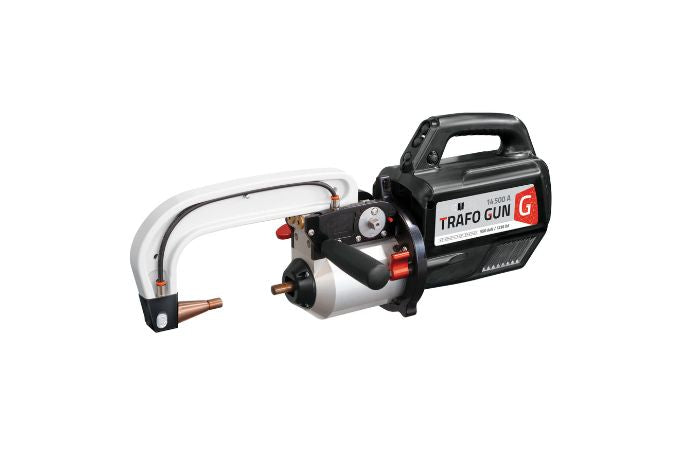
Most spot welders are now "synergic" with preset parameters and settings. Some are called "smart" or "automatic" and I have written a post about this before, which you can check out here.
No machine is automatic, no weld can be guaranteed, no spot welder is one-button operation. This is maybe, what you will be told by the salesman, but it's not correct in real life.
You will still need to sometimes weld in semi synergic or manual mode and this is what I look for in a welder. How easy is it to change from the automatic settings to the manual and can the pressure, time and power be adjusted easily.
I would purchase a welder with a clear screen that is simple to navigate. The control must be simple to move from the smart or automatic mode and into manual or expert mode.
There are two types of welding gun "X" type and "C" type Most manufacturers (especially German) have moved to the transformer "C" gun option while the early bodyshop welders tended to be "X" type.
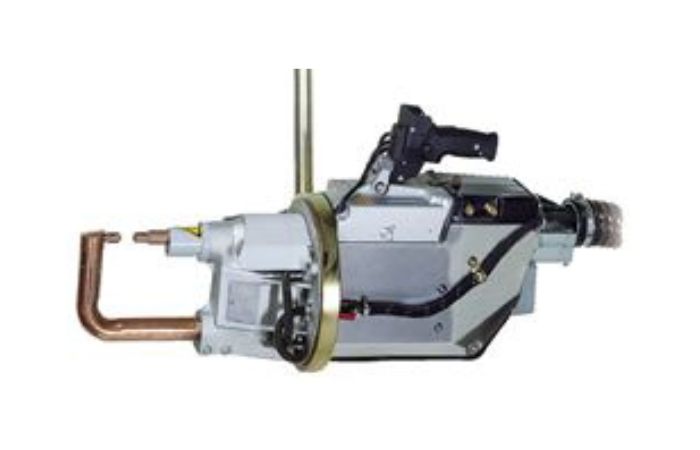
They have many advantages and some disadvantages:
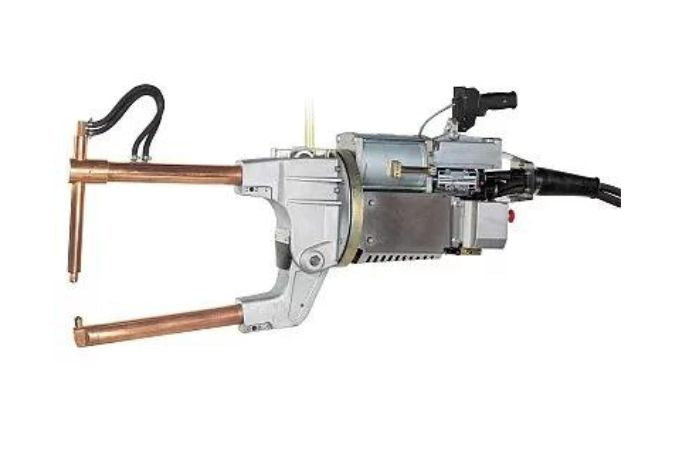
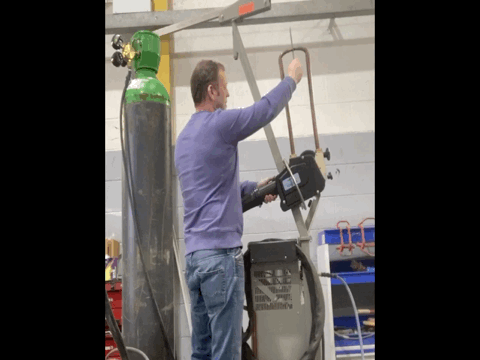
You will need the good points of the X and C type guns in your daily work, therefore the perfect machine would have both of these guns. I only know of one machine that has this The "ARO Ergoweld" its an excellent machine but very expensive. Therefore our other options are the C Gun type Transformer welders. Here I would look at the quality of the gun, especially where the welding arms fit into the gun. I would then look at can these parts be replaced and what is the cost?
I would also look at how easy it is to weld a rear panel. Does the welder have an electrode retraction button to make access easier? Or does it have a special setup on the arm ( like the Shark arm by Telwin) to enable this?
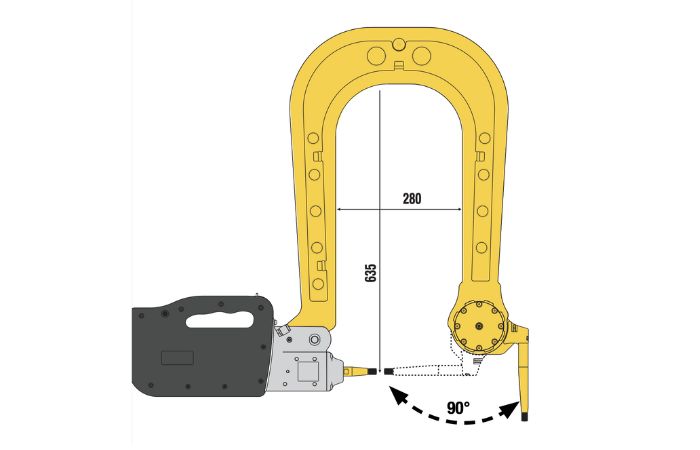
If you have an older X type cable welder, I would keep it because you will still want to use it. Remember though, long electrodes on cable gun welders don't work, they have low-pressure at the tips, causing splash outs and possible weld fractures. These types of welders can only be used with shorter arms.
Most spot welders are now "synergic" with preset parameters and settings. Some are called "smart" or "automatic" and I have written a post about this before, which you can check out here.
No machine is automatic, no weld can be guaranteed, no spot welder is one-button operation. This is maybe, what you will be told by the salesman, but it's not correct in real life.
You will still need to sometimes weld in semi synergic or manual mode and this is what I look for in a welder. How easy is it to change from the automatic settings to the manual and can the pressure, time and power be adjusted easily.
I would purchase a welder with a clear screen that is simple to navigate. The control must also be easy to navigate out of the smart or automatic modes. Also being able to manually set the weld force (pressure) is a must.
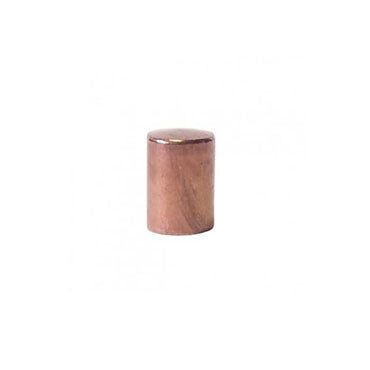
There are a lot of spot welders on the market but the most popular size of electrodes are 13mm. There are some that are 16mm but these will create problems with location and access on the small edges of a quarter panel or sill.
I would, therefore, recommend 13mm electrodes.
This means how long something will work before it overheats. See my post on duty cycle to explain this. Its also important how many panel technicians you have.
I would recommend a maximum of three technicians per machine in a busy shop, any more than this and you will start to see the machine break down and require repair. Duty cycle is also a problem with the transformer C gun, especially in smart or automatic modes. These modes tend to weld three times longer than a manual weld and this causes the gun to overheat more. When we service a welder we carry out a 40 weld spot weld test to check this and see if the machine, gun and cooling circuit are working ok. I would suggest you do the same.
Some companies pricing policy on spares can be a bit eye-watering. Checking the cost of servicing and consumable parts before a purchase is a must as the variation in costs can really add up over a spot welders life.
I had a customer call me once as one of his technicians had smashed the front LCD screen on their 6 month old spot welder.
Upon calling the company he was quoted £1600 for a replacement! After picking himself up off the floor he gave me a call and asked if I could source the screen.
After doing some detective work I located the screens from the original screen manufacturer in Taiwan and purchased 10 screens ( the minimum order). The total cost of all these screens including carriage was less than the one quoted to the customer from the supplier.
For some reason this ongoing cost is never taken into consideration when purchasing and yet is should. I would recommend before purchase to ask how much a new welding arm would be or a control PCB. Then you can compare this to another make you may be interested in.
For me, this is the most important part! Ensure the company you purchase from can repair and service your machine correctly. A purchase should be a long term relationship where mutual benefit is obtained. You with good service, parts cost and technical support. The supplier with extra business and a customer for many years.
If you need more advice and thoughts on a potential purchase, then please contact us and we will endeavour to answer your questions.
Comments will be approved before showing up.